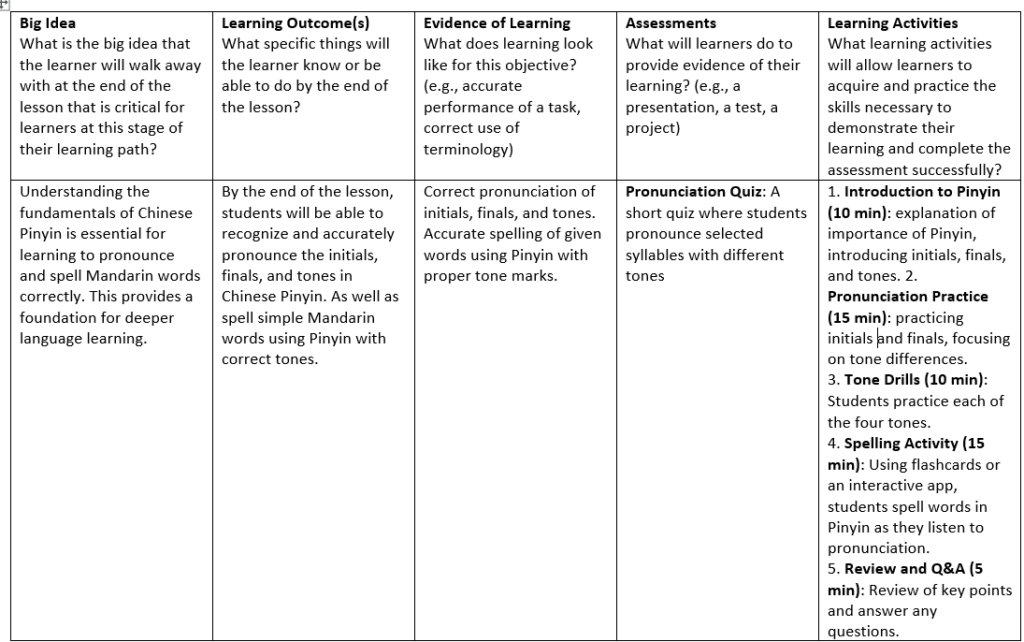
Reflection
For this week, I explored creating an H5P activity using dialog cards to reinforce vocabulary in Chinese, specifically country names. I am learning Chinese now so this seemed like a good way to reinforce what I have learnt so far.
Using dialog cards was inspired by Merrill’s principles, especially the emphasis on application and integration of new knowledge. Presenting vocabulary as a quick recall activity encourage learners to apply what they know and the format helps build confidence and fluency.
Active Learning vs. Passive Learning
The balance between passive and active learning has been evident throughout this course. I find that when I engage in hands-on activities, like creating H5P content, I retain more than when I only read or listen to new information. This aligns with the Harvard study on active learning, which highlights that, while students may feel that traditional methods are easier, they actually gain a deeper understanding from active learning tasks. This experience has shown me the power of interactive tools to convert concepts from passive to active learning, helping to solidify new knowledge.
Future Use of H5P in Teaching
Dialog cards in H5P have been easy to use and effective for vocabulary practice, making them a good fit for self-paced student learning. I also want to try other H5P formats, like interactive videos or quizzes, to provide instant feedback.
An Example of Scaffolding From Learning Experience
This is the approach I experience in my Chinese class while learning Chinese pinyin.
- Modeling (I Do): Our teacher introduced Pinyin sounds and tones, demonstrating each one while we listened.
- Guided Practice (We Do): We repeated each sound with the teacher, practicing pronunciation and receiving feedback.
- Group Practice: In small groups, we practiced assigned Pinyin syllables together, helping each other with tones.
- Independent Practice (You Do): We then practiced reading and recording our pronunciation individually.
- Assessment and Reflection: Finally, we took a short pronunciation assessment and reflected on where we could improve.
Hi Serena! This reflection shows how helpful H5P activities can be for active learning. By using dialog cards to practice Chinese vocabulary, the writer finds it easier to remember words and feels more engaged than with regular study methods. Good job!
It’s inspiring to see how you’re applying Merrill’s principles and active learning strategies to enhance your Chinese vocabulary. Using H5P dialog cards and scaffolding techniques seems highly effective. Your H5P dialog cards on Chinese country names are awesome! They would help someone practice and remember the vocabulary better. It’s cool how interactive tools like this make learning more fun. Thanks for sharing!